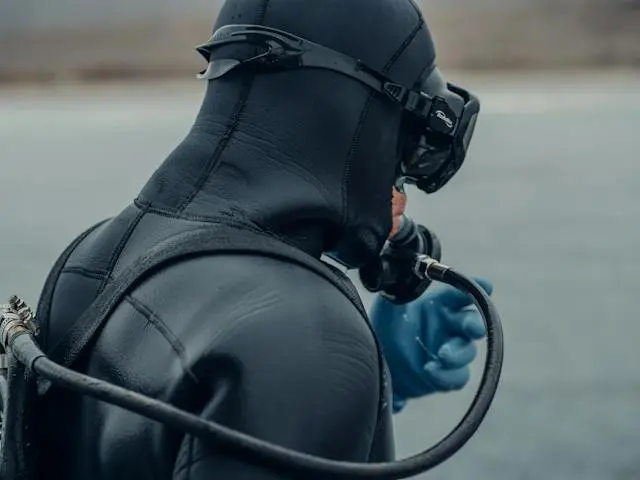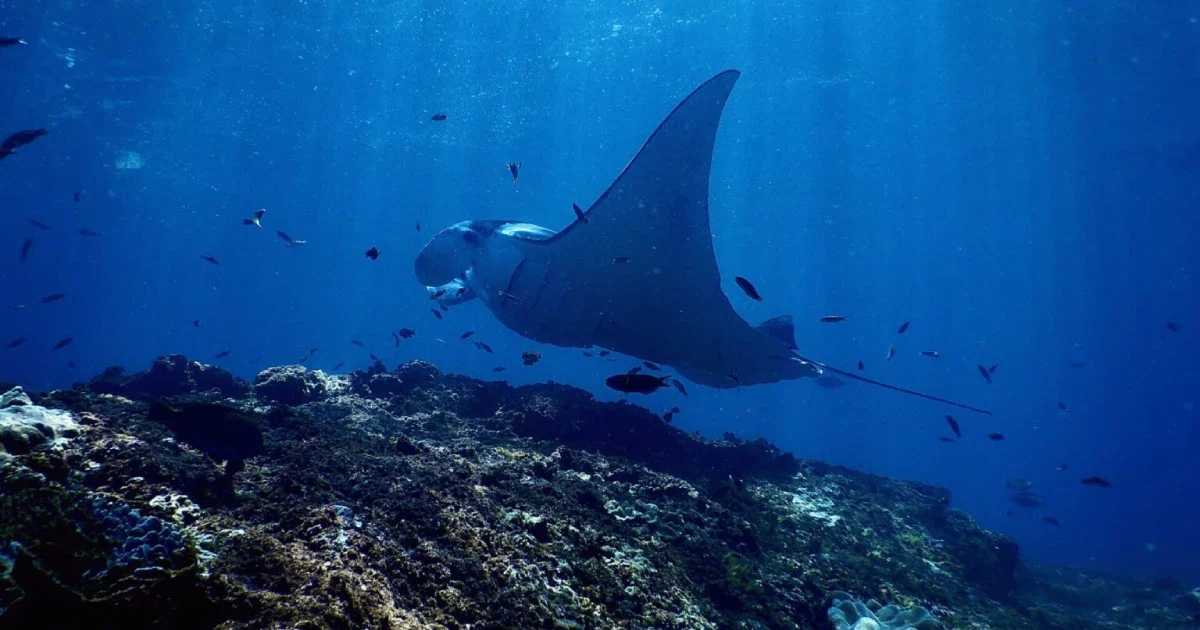The underwater world has always fascinated us, drawing in adventure-seeking recreational divers and skilled professional commercial divers alike. It acts as both a playground for enthusiasts and a workplace for those undertaking specialized tasks. Despite sharing a profound love for the ocean, recreational and commercial diving are quite different, each with unique purposes, challenges, and responsibilities.
To start with the basics, we will highlight some major key differences and similarities in what it takes to be a recreational or commercial diver. While both divers have the ocean as their workplace, their kind of work differs from one another.
For instance, recreational divers’ work lies in exploration and the thrill of adventure, as they dive into the ocean’s depths to witness the mesmerizing beauty of coral reefs and the diverse marine life that inhabits them. On the other hand, professional commercial divers don’t plunge into the depths solely for the pleasure of exploration; they have a clear mission. Engaged in specialized tasks such as offshore construction, oil and gas exploration, and underwater maintenance, commercial divers operate in a domain where precision and expertise are crucial. Their underwater efforts directly contribute to industries essential for global infrastructure, requiring a high level of technical proficiency and strict adherence to safety standards.
While recreational and commercial divers share a fundamental appreciation for the underwater environment, their distinct purposes give rise to unique challenges and responsibilities. In this blog, we will distinguish these two diving practices, exploring the key differences that set them apart so that you have a good understanding and ultimately, decide on your career pathways and their potential. Simultaneously, we will also reveal surprising commonalities that bridge the gap between these seemingly different pursuits. Our goal is to provide a comprehensive understanding of the diverse motivations, challenges, and shared values that define these captivating underwater experiences.
Purpose and Objectives
Commercial Diving
Commercial diving is driven by a defined purpose – to perform specialized tasks crucial to various industries. Whether engaged in offshore construction, oil and gas exploration, or underwater maintenance, the primary goal is to contribute directly to sectors that rely on underwater infrastructure. Commercial divers are tasked with executing intricate operations such as welding, inspection, and salvage work, demanding a high level of technical expertise. Their underwater missions are guided by specific objectives aimed at ensuring the integrity and functionality of structures vital to global commerce.
- Industrial Contribution: The primary objective is to contribute to industries such as construction, oil and gas, and maintenance, supporting global infrastructure and economic activities.
- Specialized Tasks: Commercial divers perform specialized tasks, including welding and inspection, with precision and technical proficiency to maintain and enhance underwater structures.
- Safety Compliance: Strict adherence to safety protocols is a fundamental objective, given the inherently hazardous nature of commercial diving tasks.
Recreational Diving
Recreational diving, in contrast, is driven by the pursuit of leisure, adventure, and the sheer joy of underwater exploration. The purpose here is personal satisfaction and enjoyment as divers immerse themselves in the wonders of coral reefs, vibrant marine life, and the tranquility of the underwater environment.
- Exploration and Enjoyment: The primary objective is to explore and enjoy the underwater world, appreciating its beauty and tranquility.
- Skill Enhancement: Recreational divers often seek to improve their diving skills, including buoyancy control and underwater communication, for a safer and more enjoyable experience.
- Environmental Appreciation: A key objective is to foster environmental consciousness, promoting the preservation and protection of marine ecosystems
Similarities:
- Love for the Ocean: Both commercial and recreational divers share a deep appreciation for the underwater environment and its diverse ecosystems.
- Training: Rigorous training is crucial for both types of divers, though the focus may differ. Commercial divers undergo specialized training for industrial tasks, while recreational divers train for skill enhancement and safety awareness.
- Environmental Consciousness: Both groups recognize the importance of preserving marine ecosystems, emphasizing responsible and sustainable diving practices.
Training and Certification
Commercial Diving
Commercial diving training is highly specialized, and tailored to the unique demands of industrial underwater work. Individuals aspiring to become commercial divers undergo rigorous and comprehensive training programs. The curriculum is designed to impart skills specific to the tasks they will encounter in their professional roles, such as underwater welding, cutting, and the operation of heavy equipment. The training involves a deeper understanding of industrial procedures, safety protocols, and the nuances of underwater construction, inspection, and maintenance.
Certification for commercial divers typically involves meeting industry standards set by organizations such as the Association of Commercial Diving Educators (ACDE) or the International Marine Contractors Association (IMCA). These certifications validate the diver’s competence in handling complex tasks in challenging underwater environments. Achieving and maintaining certification in commercial diving is often a continuous process, reflecting the evolving nature of industry standards and technology.
Recreational Diving
Recreational diving training is geared towards providing enthusiasts with the skills and knowledge needed for safe and enjoyable underwater exploration. Certification agencies like PADI and NAUI offer tiered training programs to cater to divers of various experience levels. The emphasis in recreational diving training lies in fundamental skills such as buoyancy control, navigation, and communication. Additionally, divers are educated on safety procedures, emergency response, and the importance of environmental conservation.
Certification levels in recreational diving, such as Open Water, Advanced Open Water, and Rescue Diver, signify different stages of proficiency and experience. Recreational diving certifications are generally more accessible to a broader audience, allowing individuals to progress at their own pace. While they indicate a diver’s competence, they don’t delve as deeply into specialized skills compared to commercial diving certifications.
Similarities
- Safety Protocols: Both commercial and recreational diving training prioritize safety. Divers in both realms learn essential safety measures, emergency response procedures, and how to navigate potential risks in the underwater environment. Safety is a paramount concern in all diving activities, regardless of the purpose.
- Environmental Awareness: Both types of diving training instill a sense of environmental responsibility. Divers are educated about the fragility of underwater ecosystems, emphasizing the importance of conservation and sustainable practices. Environmental awareness is a shared value across the diving community.
- Continuous Education: In both commercial and recreational diving, the learning process doesn’t end with initial certification. Divers are encouraged to pursue continuous education to enhance their skills, stay updated on industry standards, and adapt to evolving technologies. Continuous education ensures that divers in both sectors remain competent and informed throughout their diving careers.
While the goals of commercial and recreational diving differ, the importance of thorough training and certification is a common thread. Whether preparing for the specialized challenges of commercial diving or the diverse environments of recreational diving, proper training ensures that divers are well-equipped and knowledgeable, contributing to the overall safety and sustainability of underwater exploration.
Equipment
Commercial Diving
Commercial diving involves complex underwater tasks, and as such, the equipment used is highly specialized to meet the demands of industrial applications.
- Diving Suit: Commercial divers typically use drysuits or wetsuits, depending on the water temperature. Drysuits provide insulation by keeping the diver dry, while wetsuits allow a thin layer of water to enter, providing thermal protection.
- Helmet and Full Face Mask: Commercial divers wear helmets with integrated communication systems and full face masks to protect the head and face. These masks allow for communication between divers and surface personnel.
- Diving Harness: A diving harness is essential for commercial divers to secure themselves to various tools and equipment. This ensures safety and stability during underwater tasks.
- Weight System: Commercial divers use a weight system to achieve neutral buoyancy, allowing them to control their depth and movement underwater effectively.
- Breathing Gas System: Unlike recreational divers who primarily use compressed air, commercial divers often utilize mixed gases such as helium and oxygen to mitigate the effects of deep-sea pressure. Surface-supplied diving systems or umbilicals provide a continuous supply of breathing gas to the diver.
- Underwater Tools: Commercial diving involves various tasks like welding, cutting, and inspection. Specialized tools, such as underwater welding equipment, cutting torches, and video inspection systems, are crucial for completing these tasks.
- Diving Bell or Chamber: For deep-sea dives, commercial divers may use diving bells or hyperbaric chambers for decompression and to prevent decompression sickness.
Recreational Diving
Recreational diving equipment is designed to provide safety and comfort for underwater exploration without the technical complexities associated with commercial diving.
- Diving Suit: Recreational divers use wetsuits or drysuits based on water temperature. Wetsuits are more common in warmer waters, while drysuits offer insulation in colder environments.
- Scuba Gear: Recreational divers rely on scuba (self-contained underwater breathing apparatus) gear, including a regulator, buoyancy control device (BCD), and a tank of compressed air. The regulator allows controlled breathing, the BCD helps manage buoyancy, and the tank provides the air supply.
- Mask, Fins, and Snorkel: These basic pieces of equipment facilitate comfortable breathing, clear vision, and efficient movement underwater. The snorkel allows divers to breathe at the surface without using the air supply.
- Dive Computer: A crucial piece of modern equipment, the dive computer monitors depth, time, and decompression limits, enhancing safety and simplifying dive planning.
- Underwater Light: Recreational divers often carry waterproof flashlights for better visibility in low-light conditions or when exploring caves and wrecks.
- Dive Knife: Though not as specialized as those used in commercial diving, recreational divers may carry a dive knife for safety and practical reasons.
- Underwater Camera: Many recreational divers carry compact or action cameras to capture the beauty of underwater environments.
While both commercial and recreational diving shares common items like suits and masks, the divergence in equipment highlights the specific needs of each pursuit. Commercial diving demands highly specialized tools for industrial tasks, while recreational diving equipment emphasizes simplicity, ease of use, and comfort for underwater exploration. Both sets of equipment, however, play a crucial role in ensuring the safety and enjoyment of divers in their respective contexts.
Safety and Risk Management
Diving, whether recreational or commercial, requires meticulous attention to safety and effective risk management. The underwater environment presents unique challenges, and divers must be well-prepared to mitigate potential hazards. Here’s an exploration of safety measures and risk management strategies in the context of diving:
Common Safety Practices:
- Proper Training and Certification: Both recreational and commercial divers must undergo comprehensive training from recognized agencies. This training equips divers with essential skills, knowledge of safety protocols, and the ability to respond to emergencies.
- Equipment Maintenance: Regular inspection and maintenance of diving equipment are fundamental to ensuring its reliability underwater. Commercial divers, in particular, undergo stringent checks on specialized tools and systems to prevent malfunctions during complex tasks.
- Buddy System: Divers, whether recreational or commercial, often adhere to the buddy system. This practice involves pairing divers, who monitor each other for signs of distress and provide assistance in case of emergencies.
- Dive Planning: Thorough dive planning is critical to managing risks. This includes evaluating environmental conditions, setting dive limits, and accounting for factors such as currents, depth, and visibility.
- Emergency Response Training: Divers are trained to handle emergency situations, including equipment malfunctions, loss of visibility, and decompression sickness. Quick and effective responses can significantly mitigate the impact of emergencies.
Commercial Diving Safety Measures
- Job Hazard Analysis (JHA): Before undertaking specific tasks, commercial divers conduct a Job Hazard Analysis to identify potential risks associated with the job. This proactive approach allows for the implementation of targeted safety measures.
- Surface-Supplied Diving Systems: Commercial divers often use surface-supplied diving systems, which provide a continuous air supply from the surface. This reduces the risk of running out of air and allows for constant communication between divers and surface personnel.
- Dive Plans and Checklists: Commercial diving projects involve detailed dive plans and checklists. These documents outline the tasks, safety measures, and emergency procedures, ensuring a systematic and well-organized approach to underwater work.
- Diving Bell or Chamber: For deep-sea dives, commercial divers may use diving bells or hyperbaric chambers to facilitate decompression and treat decompression sickness, enhancing overall safety.
Environmental Considerations:
- Weather and Sea Conditions: Divers must be aware of and account for changing weather and sea conditions, as these factors significantly impact the safety of a dive.
- Marine Life Awareness: Both recreational and commercial divers need to understand the behavior of marine life and potential risks associated with encounters. Certain species may pose a threat, and divers are trained to minimize interactions that could lead to accidents.
Risk Management Strategies:
- Continuous Education: Divers engage in continuous education to stay updated on the latest safety protocols, technologies, and best practices. This ongoing learning helps divers adapt to evolving industry standards.
- Effective Communication: Clear and efficient communication is crucial in diving. Hand signals, dive briefings, and communication systems (particularly in commercial diving) enhance coordination and safety.
- Comprehensive Pre-Dive Checks: Before every dive, divers conduct thorough pre-dive checks on their equipment. This includes ensuring the functionality of regulators, checking air supply, and confirming the integrity of seals on drysuits or wetsuits.
- Risk Assessments: Both recreational and commercial divers perform risk assessments before each dive. This involves evaluating potential hazards and implementing measures to reduce or eliminate risks.
In conclusion, safety and risk management are paramount in diving. Whether exploring the underwater world for pleasure or engaging in specialized industrial tasks, divers prioritize thorough training, adherence to safety protocols, and proactive risk management strategies. These practices not only enhance the safety of divers but also contribute to the sustainability of underwater ecosystems by minimizing human impact.
Environmental Responsibility
Divers, whether recreational enthusiasts or professional commercial practitioners share a profound connection with the underwater world. As guardians of the oceans, environmental responsibility is a fundamental principle that guides every aspect of diving, influencing both individual behaviors and industry practices.
- Marine Conservation Awareness: Divers are ambassadors for the oceans, and environmental responsibility begins with fostering awareness about marine conservation. Understanding the delicate balance of underwater ecosystems, the importance of biodiversity, and the threats posed by pollution, overfishing, and climate change is crucial. This awareness forms the foundation for responsible and sustainable diving practices.
- Responsible Tourism: In recreational diving, responsible tourism is an integral aspect of environmental responsibility. Divers choose operators and destinations that prioritize sustainable practices, minimizing the impact on marine ecosystems. Avoiding physical contact with marine life, respecting underwater habitats, and adhering to established codes of conduct are essential components of responsible diving tourism.
- Leave-No-Trace Principles: One of the core tenets of environmental responsibility in diving is the adherence to “leave-no-trace” principles. Whether exploring coral reefs or engaging in underwater activities, divers strive to minimize their impact on the environment. This includes avoiding contact with delicate marine life, not disturbing underwater formations, and properly disposing of waste.
- Reef-Friendly Practices: Recreational divers are particularly mindful of their interactions with coral reefs. Avoiding physical contact with coral, using reef-friendly sunscreen, and practicing buoyancy control to prevent accidental damage are key components of responsible reef diving. Additionally, supporting initiatives that contribute to coral reef restoration and conservation underscores a commitment to environmental responsibility.
- Eco-Friendly Dive Gear: Both recreational and commercial divers recognize the importance of using eco-friendly dive gear. This includes choosing equipment made from sustainable materials, opting for products with minimal environmental impact, and properly disposing of or recycling gear at the end of its lifecycle.
- Waste Management: Proper waste management is a priority in diving, particularly in the disposal of plastics and other non-biodegradable materials. Commercial divers adhere to strict protocols for waste disposal, ensuring that no contaminants enter the underwater environment. Recreational divers are encouraged to participate in underwater clean-up initiatives and to pick up any litter encountered during dives.
- Education and Advocacy: Environmental responsibility in diving extends beyond personal actions to education and advocacy. Divers, whether recreational or commercial, play a crucial role in raising awareness about marine conservation issues. They advocate for policies that protect marine ecosystems, support marine reserves, and engage in community initiatives that promote sustainable practices.
- Carbon Footprint Reduction: Commercial diving operations, aware of their environmental impact, strive to minimize their carbon footprint. This includes optimizing vessel fuel efficiency, adopting energy-efficient technologies, and exploring alternative energy sources where feasible.
- Research and Monitoring: Both recreational and commercial divers contribute to marine research and monitoring efforts. By participating in citizen science projects, reporting marine observations, and supporting research initiatives, divers actively contribute to the understanding and conservation of marine ecosystems.
In essence, environmental responsibility in diving is a holistic commitment that encompasses individual actions, industry practices, and a collective dedication to the preservation of the underwater world. By embracing sustainable practices, promoting conservation efforts, and advocating for responsible policies, divers become stewards of the oceans, ensuring that these remarkable ecosystems thrive for generations to come.
Commercial diving and recreational diving may have distinct goals and requirements, but they both contribute to our understanding and appreciation of the underwater world. Whether you’re a professional diver working underwater to maintain critical infrastructure or a recreational diver exploring vibrant coral reefs, the love for the ocean and the commitment to its protection are common threads that unite divers worldwide.
Interested in either commercial or recreational diving careers? Check out our latest jobs here!




